Key takeaways:
- Passive investment strategies focus on long-term growth by minimizing trading and management activity, exemplified by index investing.
- Benefits of passive investing include cost-effectiveness, ease of implementation, and consistent long-term growth, reducing financial anxiety.
- Key assets for passive investing primarily consist of index funds, ETFs, and REITs, which provide diversification and lower management costs.
- Successful passive investing involves prioritizing long-term goals, regularly reviewing asset allocation, and diversifying investments to mitigate risk.
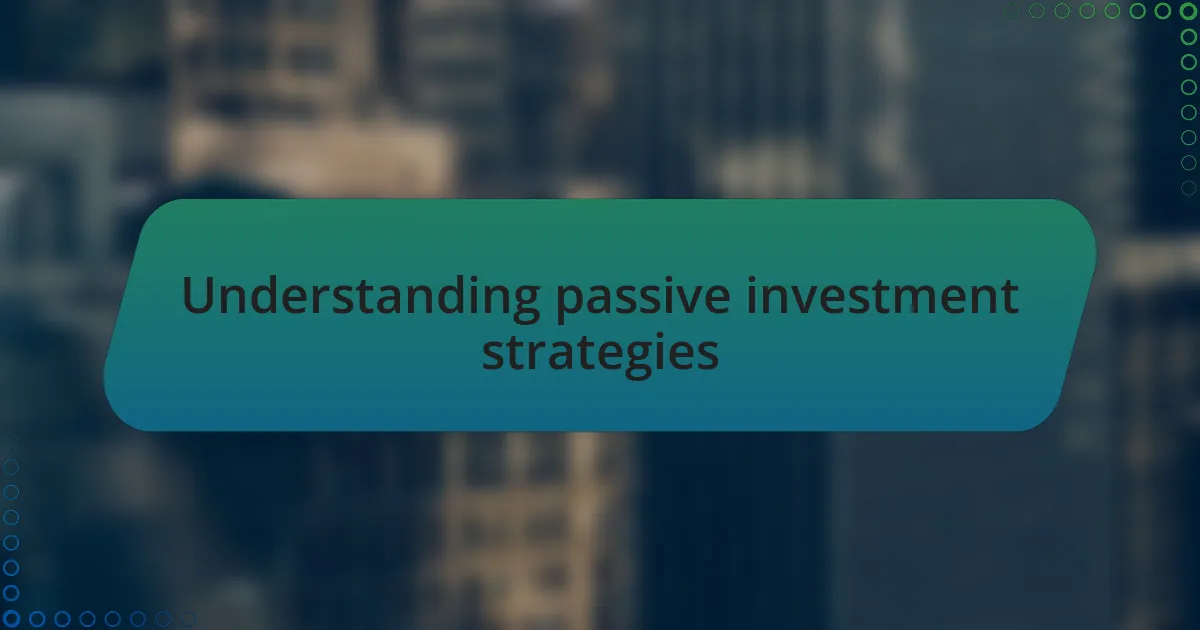
Understanding passive investment strategies
Passive investment strategies focus on long-term growth by minimizing trading and management activity. I remember when I first started investing; the allure of constant trading felt exciting. Yet, I quickly realized that a more laid-back approach allowed me to focus on steady growth rather than getting caught up in market fluctuations.
One of the most well-known passive strategies is index investing, where you buy into funds that replicate market indices. I recall the moment I chose an index fund over an actively managed one. The decision was driven by my desire for lower fees and a simpler strategy. It’s fascinating how such simplicity can often outperform complex, high-pressure tactics over time.
Have you ever thought about how much time and stress you could save with passive investing? It’s not just about avoiding the daily noise of the market; it’s about letting your investments grow naturally. I’ve found that this approach not only eases financial anxiety but fosters a deeper connection with my investment goals, allowing me to focus on what truly matters in the long run.
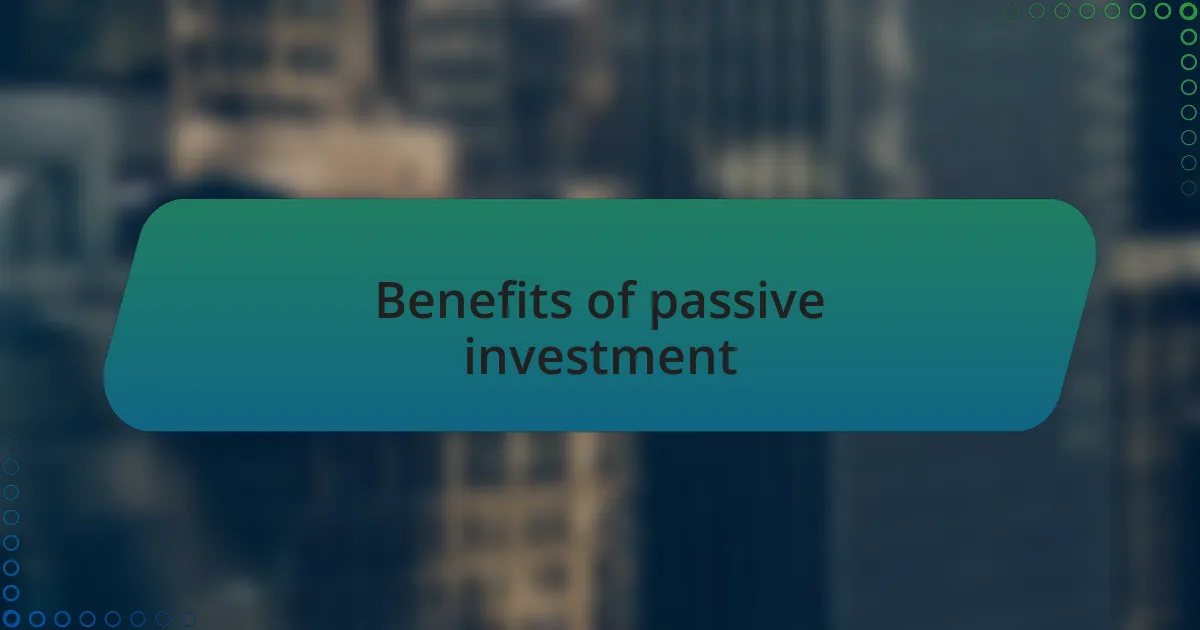
Benefits of passive investment
One major benefit of passive investment strategies is their cost-effectiveness. I can still vividly remember the moment I realized how much fees eat into long-term returns. By choosing passive investments like index funds, not only do I avoid high management fees, but I’m also able to keep more of my money working for me over time. Doesn’t it just make sense to put your hard-earned cash to work rather than allowing it to disappear in fees?
Another appealing aspect of passive investing is the ease of implementation. When I first entered the investment world, I was overwhelmed by the sheer volume of options and strategies available. Transitioning to a passive approach simplified everything—it felt liberating. Just set it and forget it! It’s remarkable how this simplicity allows for a more effective allocation of mental energy toward other aspects of life, like family or personal interests. Have you ever wished investing could be less of a chore?
Moreover, the potential for consistent growth with passive investments is truly compelling. I remember feeling a sense of comfort as I watched my index funds steadily increase in value over the years, especially during market dips when many others panicked. This long-term outlook fosters patience and resilience, qualities that are invaluable not just in investing but in life. Just think about it—while others are consumed by short-term fluctuations, you can confidently stay the course and watch your investments compound smoothly.
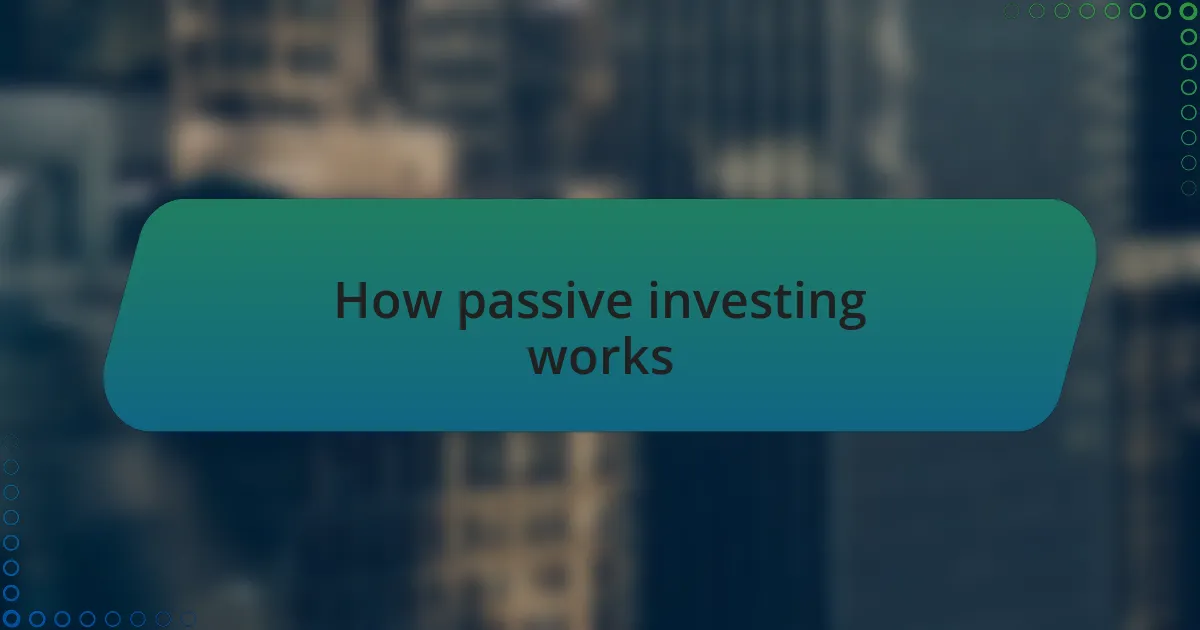
How passive investing works
Passive investing works by aiming to replicate the returns of a specific market index, rather than attempting to outperform it through active management. I remember discussing this with a friend who was skeptical of its effectiveness. He wondered, “Why not try to beat the market?” I explained that trying to time the market can lead to stress and frustration, while passive strategies provide a straightforward, hands-off approach.
At its core, passive investing typically involves buying and holding a diverse range of investments that mirror an index, like the S&P 500. The beauty of this approach is that your portfolio doesn’t require constant monitoring or frequent trades, which can be a relief. I distinctly recall the first time I set it up—I felt an overwhelming sense of freedom realizing I didn’t have to dive into daily stock news or portfolio adjustments anymore.
This strategy also relies on the concept of market efficiency, where prices reflect all available information. It was a lightbulb moment for me when I grasped that over the long run, the market tends to rise, and individual stock picking is often less fruitful. Instead of chasing the latest hot stock, why not just ride the market wave? Doesn’t that sound like a more relaxed and sustainable way to build wealth over time?
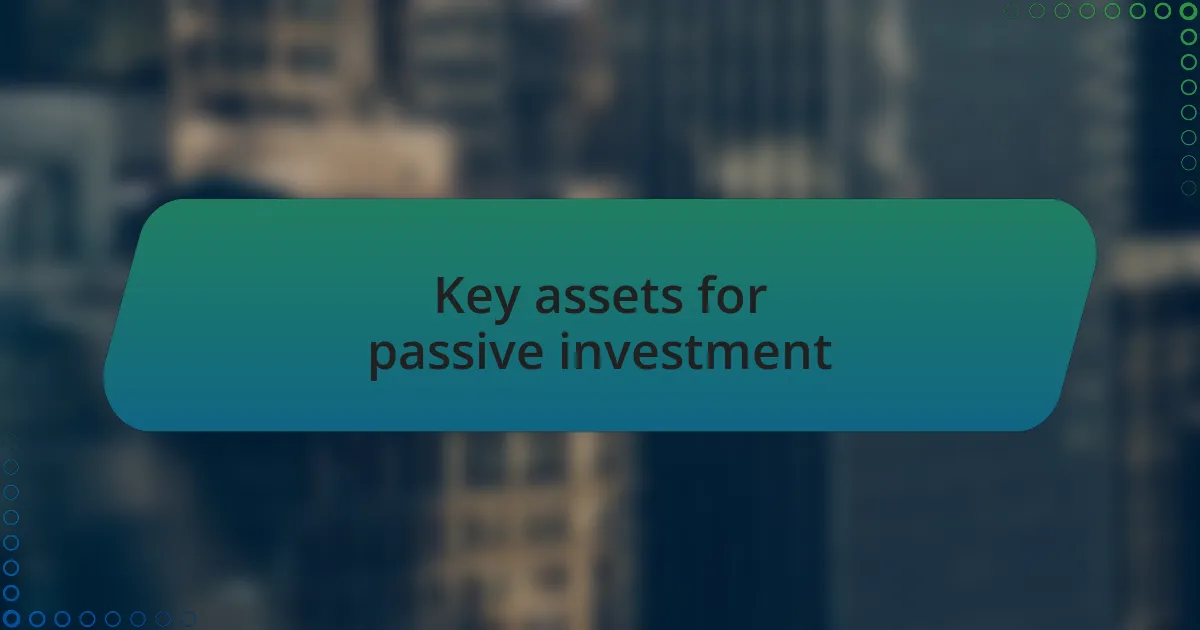
Key assets for passive investment
Key assets for passive investment can be broadly categorized into three main types: index funds, exchange-traded funds (ETFs), and real estate investment trusts (REITs). I remember my initial skepticism about REITs until a close friend pointed out how they allow investors to gain exposure to real estate without the headaches of property management. This simple revelation opened my eyes to the diversity available in passive assets.
Index funds are particularly appealing because they track a specific benchmark, providing broad market exposure. When I first invested in an index fund, I felt a sense of relief since I didn’t have to pick individual stocks. It felt like I was joining a community of investors all working toward the same goal: tracking the market rather than trying to outperform it.
ETFs are another fantastic option, as they trade like stocks but offer the diversification of mutual funds. I found it fascinating how they can be bought and sold throughout the day, and their low expense ratios make them a cost-effective solution. Doesn’t it make sense to leverage these strategies to navigate the investment landscape with more confidence and less stress?
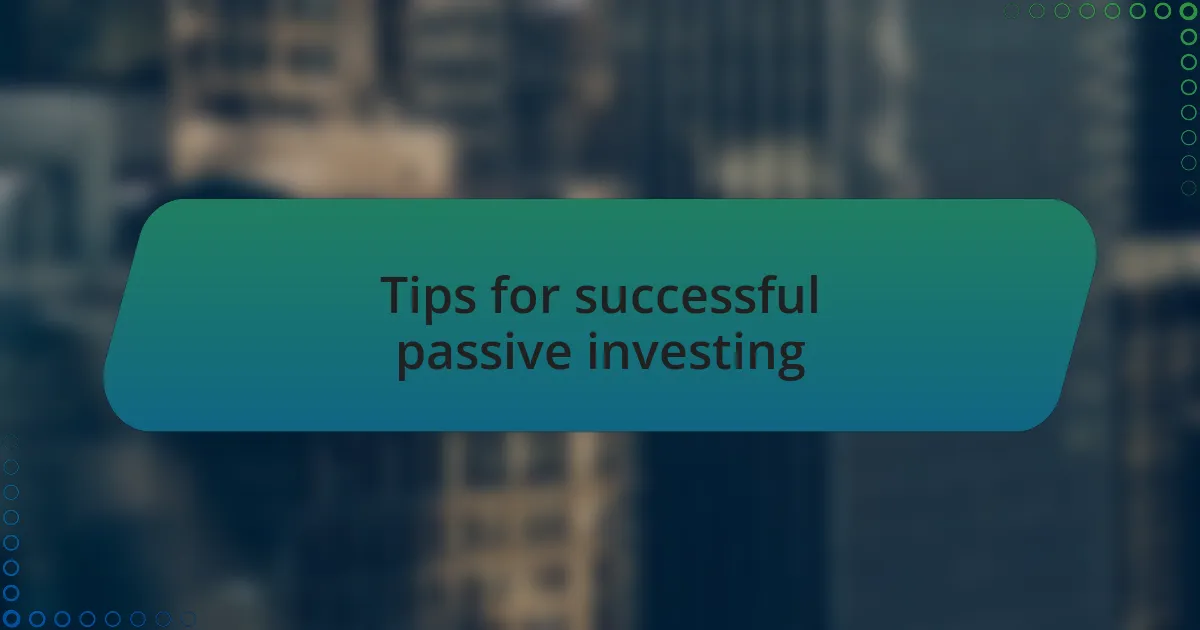
Tips for successful passive investing
When diving into passive investing, one pivotal tip I’ve learned is to prioritize long-term goals over short-term fluctuations. I recall when I first started, my instinct was to check my portfolio daily, driven by market volatility. Eventually, I realized that genuine success in passive investing often means tuning out the noise and focusing on the broader picture.
Another essential strategy is to regularly review your asset allocation. In my early investing days, I underestimated the impact of changes in market dynamics and how they could affect my portfolio. By revisiting my allocations a couple of times a year, I found a balance that kept my investments aligned with my goals, reducing the chances of panic-driven decisions when the market shifted.
Finally, diversifying your investments across various asset classes can significantly reduce risk. For instance, I used to fear missing out on potential gains by spreading my investments too thin, but instead, I discovered that holding a mix of assets—like stocks, bonds, and REITs—provided a safety net. Isn’t it reassuring to know that by exploring multiple avenues, we can cushion ourselves against market downturns while still participating in growth?